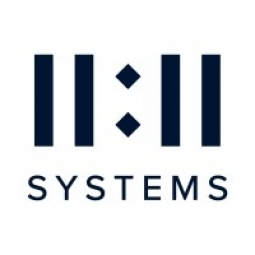Mono County Superior Court partners with 11:11 Systems for superior data protection and business continuity

Customer Company Size
SME
Region
- America
Country
- United States
Product
- 11:11 DRaaS for Veeam
- 11:11 Cloud Backup for Veeam Cloud Connect with Insider Protection
- 11:11 Cloud Backup for Microsoft 365
Tech Stack
- Veeam
- Microsoft 365
Implementation Scale
- Enterprise-wide Deployment
Impact Metrics
- Cost Savings
- Productivity Improvements
- Digital Expertise
Technology Category
- Infrastructure as a Service (IaaS) - Backup & Recovery
- Infrastructure as a Service (IaaS) - Cloud Computing
Applicable Functions
- Business Operation
Use Cases
- Cybersecurity
Services
- Cloud Planning, Design & Implementation Services
- Cybersecurity Services
About The Customer
The Superior Court of Mono County, California is responsible for handling the county’s criminal and civil proceedings, including felony, misdemeanor, traffic, family law, and probate cases, as well as misdemeanor and small claims case appeals and other services. Mono County is home to just over 13,000 residents and is set on the eastern slopes of the Sierra Nevada Mountain range. Its Superior Court has two branches — North and South — located in Bridgeport and Mammoth Lakes, respectively. The court's IT infrastructure is managed by a single IT systems engineer, Jim Lewey, who is responsible for the entirety of the court’s infrastructure, from servers and their backups to all employee workstations, laptops, and phones.
The Challenge
The Superior Court of Mono County, California, was facing several challenges. The court was struggling with the cost in time and money to manage Disaster Recovery (DR) internally. They needed secure and reliable access to data, but their backup vendor was unresponsive and unreliable. The court was under constant threat of ransomware and lacked in-house IT skills and resources. The court's previous data recovery solution had many disruptions and drawbacks, including corrupted backups that ultimately had to be erased. The court was also facing unique challenges due to its location in the Sierra Nevada mountains, including limited Internet bandwidth and unpredictable, sometimes severe weather conditions.
The Solution
The court decided to partner with 11:11 Systems, an industry-leader in cloud, connectivity, and security solutions and long-time Veeam partner. They implemented 11:11 DRaaS for Veeam, 11:11 Cloud Backup for Veeam Cloud Connect with Insider Protection, and 11:11 Cloud Backup for Microsoft 365. These solutions ensured that the Court’s mission-critical applications would remain continuously available and secure. Lewey also gained the benefit of increased visibility via the award-winning 11:11 Cloud Console, which offers the ability to easily monitor and manage workloads, while also being able to lean on 11:11’s world-class account management, support, and compliance teams. The court also implemented 11:11 Cloud Backup with Insider Protection, which helps guard against threats of natural disasters and bandwidth issues.
Operational Impact

Case Study missing?
Start adding your own!
Register with your work email and create a new case study profile for your business.
Related Case Studies.

Case Study
Enel Secures Italian Power Generation Network
Electric energy operators around the world are working to increase the reliability and cyber resiliency of their systems. This includes Enel, a global power company that manages and monitors the Italian power grid. This grid:• Serves 31 million customers• Has a net installed energy capacity exceeding 31 gigawatts• Includes more than 500 power generation plants,including hydroelectric, thermoelectric, and wind• Is managed and monitored by Enel 24/7/365• Is operated by Terna, the Italian Transmission System Operator (TSO)Enel is responsible for the availability of the grid’s underlying ICS and industrial network. It also manages Regional Control Centers and Interconnection Centers which connect with the TSO. The TSO manages the flow of energy to the grid plus controls and remotely regulates the power generation of power plants, increasing and decreasing power production as required. The complex system of interaction and cooperation between Enel and the TSO has strong security implications as well as operational and business challenges.

Case Study
Securing the Connected Car Ecosystem
In-vehicle communications and entertainment system hosts high-value or sensitive applications. API libraries facilitate communication and sharing of vehicle data. These API libraries are vulnerable to reverse engineering and tampering attacks and may even result in loss of passenger safety. Attackers can inject malware that may be able to migrate to other in-car networks such as the controller-area-network (CAN) bus which links to the vehicle’s critical systems. Software provided for dealers to interface with cars through the OBD2 port is vulnerable to reverse engineering and tampering attacks. Hackers may be able to abuse these tools to inject malicious code into the ECUs and CAN bus. Attackers can lift the cryptographic keys used, and use that to build their own rogue apps/software. Their cloned version of the original app/software may have altered functionality, and may intend to gain access to other in-car networks.

Case Study
Secure and Cloud-based Data Marketplace
The great promise of new connected concepts of industry like 'Industry 4.0' is their ability to deliver a historically unparalleled level of responsiveness and flexibility. While modern supply chains are already heavily integrated and designed to be fluid and fast moving, a large swathe of manufacturing still remains beholden to economies of scale, large production runs, and careful preplanning.The Industrial Internet of Things (IIoT) is set to change this by allowing small-batch or even custom manufacturing on a truly industrial scale. With machines whose functions are not set in stone, but flexible and determined by their operating software and with a new form of connectivity bringing industrial engineers, product manufacturers, and end users closer together than ever before. Ad-hoc adjustments to automotive parts, for example, during active product runs or the bespoke manufacturing of custom sneakers become very viable options indeed.Much of this remains a theoretical vision, but IUNO, the German national reference project for IT security in Industry 4.0 demonstrates the new capabilities in action with a secure technology data marketplace running a smart drinks mixer.

Case Study
Expedia Hosted by 2lemetry Through AWS
Expedia is committed to continuous innovation, technology, and platform improvements to create a great experience for its customers. The Expedia Worldwide Engineering (EWE) organization supports all websites under the Expedia brand. Expedia began using Amazon Web Services (AWS) in 2010 to launch Expedia Suggest Service (ESS), a typeahead suggestion service that helps customers enter travel, search, and location information correctly. According to the company’s metrics, an error page is the main reason for site abandonment. Expedia wanted global users to find what they were looking for quickly and without errors. At the time, Expedia operated all its services from data centers in Chandler, AZ. The engineering team realized that they had to run ESS in locations physically close to customers to enable a quick and responsive service with minimal network latency.
.png)
Case Study
OTA Software Updates for Smart Energy (gridX)
gridX has a requirement for over-the-air software updates for their gridBox devices and used the Yocto Project for their builds. The driver for the requirement was having the ability to quickly support new features, as well as deploying bug fixed and path known security vulnerabilities. New software updates with a US stick manually to all gridBox devices in the field would be prohibitively expensive and labor-intensive.

Case Study
Transformed IT Infrastructure Improves Business Agility
A global security, storage, and systems management software provider planned to demerge into two separate companies. To prepare, it undertook a major overhaul of its IT infrastructure and operations strategy. A key requirement: streamlining the Hosting Group, which handled compute, storage, and middleware operations. These functions had grown complex and had a wide geographic distribution. The company planned to bring them under closer in-house management.The company looked to increase its business agility so it could quickly and creatively respond to customer demands with improved internal collaboration and optimized go-to- market and IT service delivery capabilities. Modernizing IT functions, and making them more responsive, was critical to achieving these goals.






